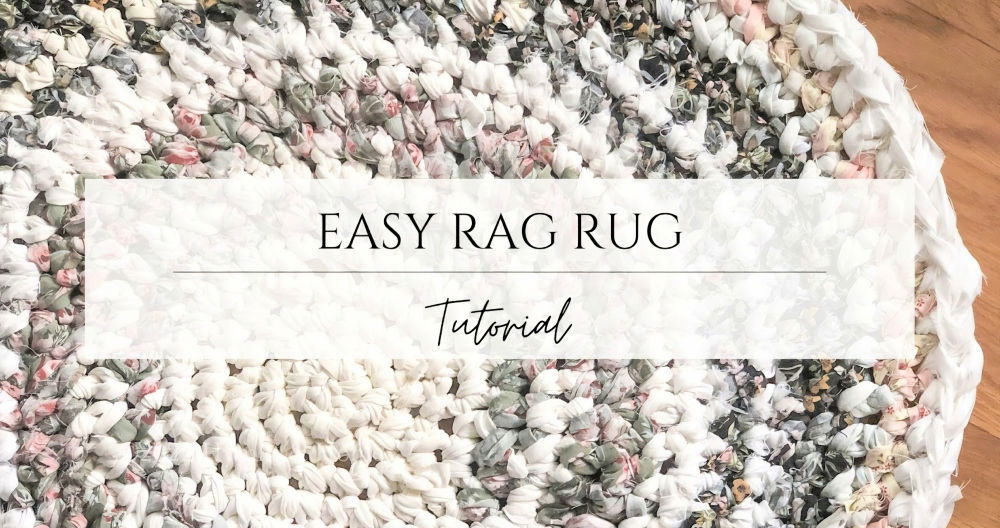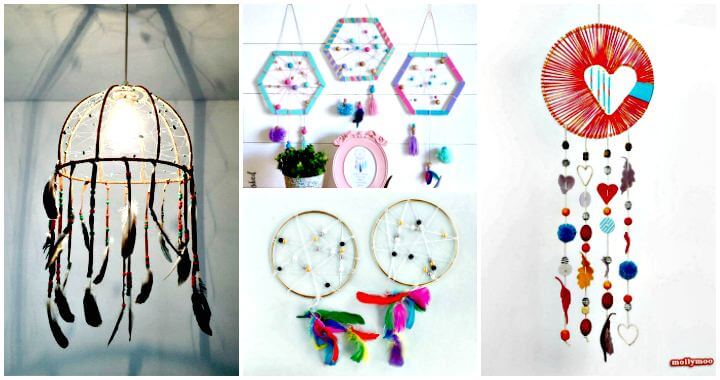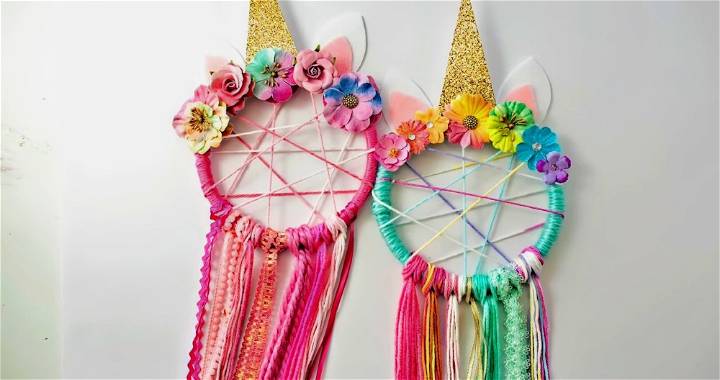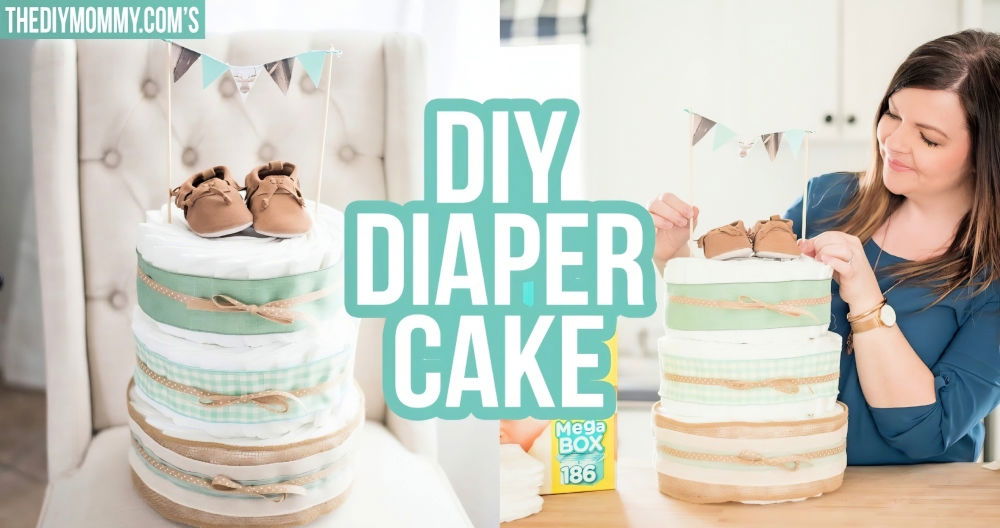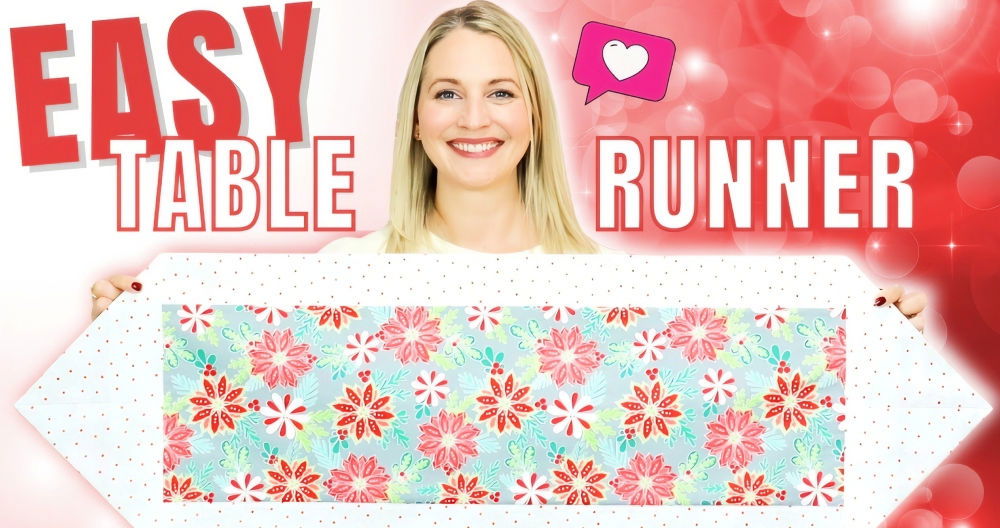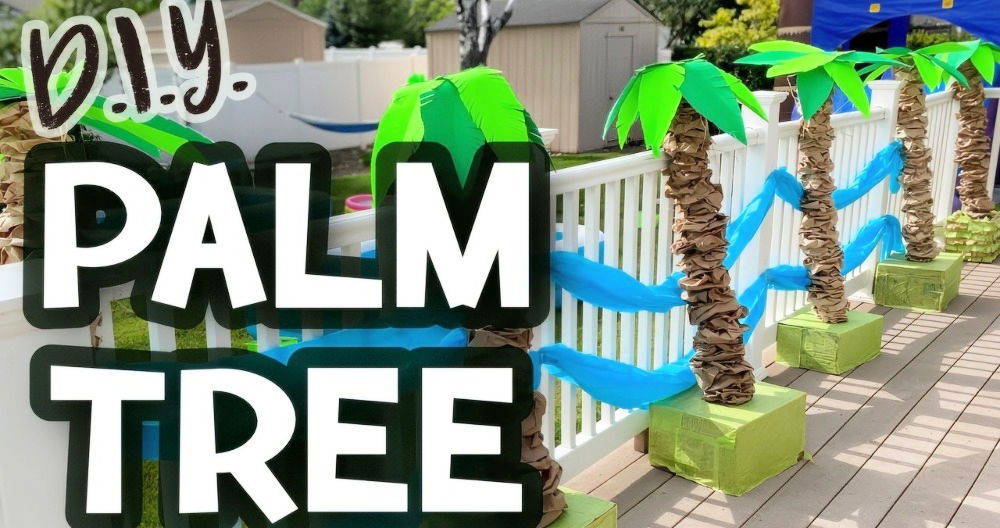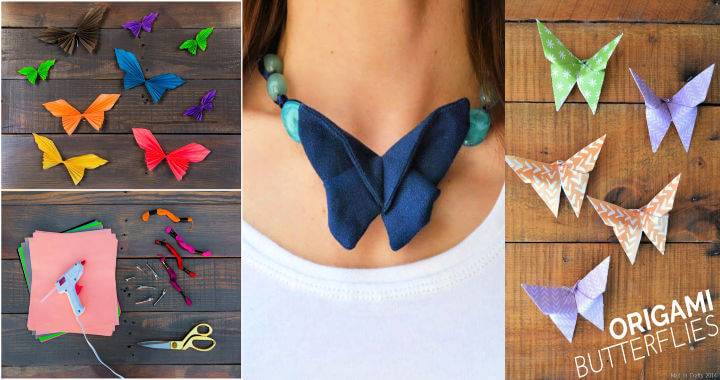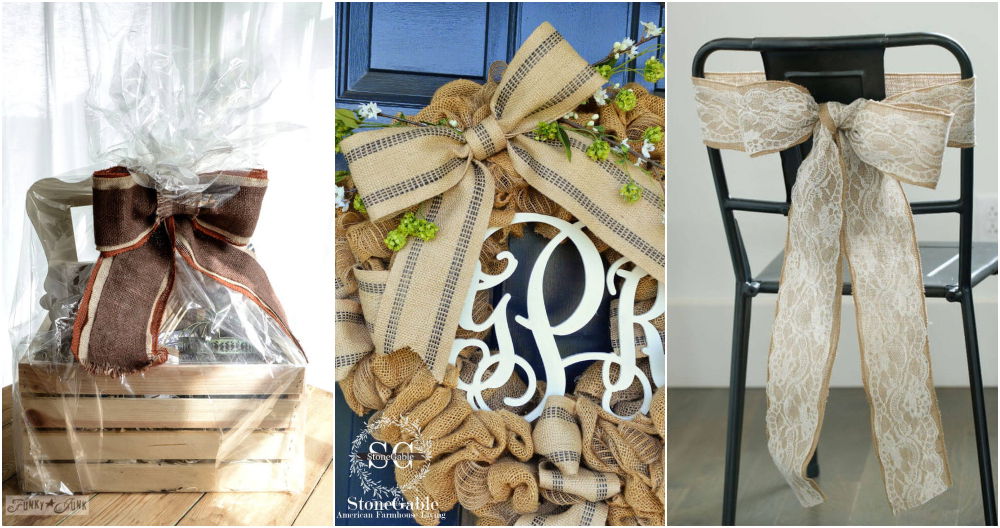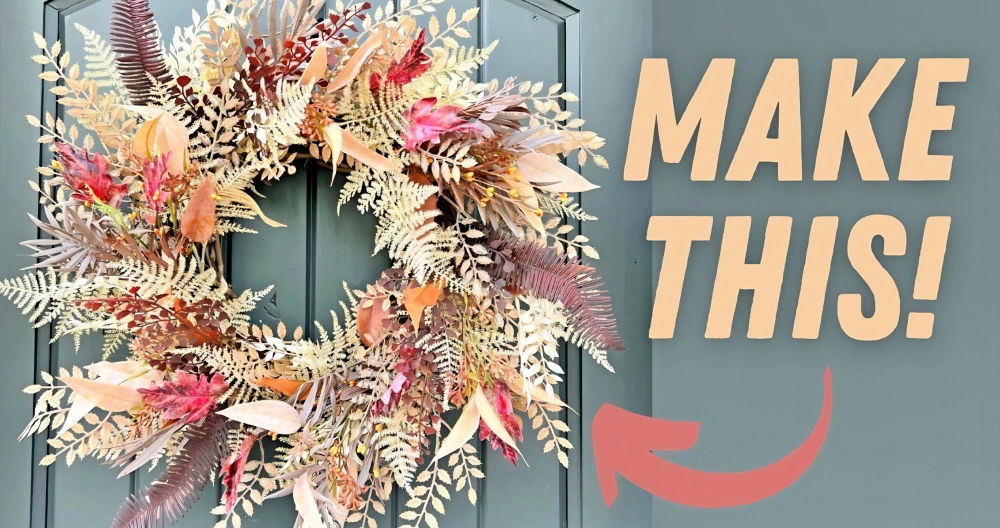Making something with my hands always gives me joy. When I first discovered how to make a rag wreath, I felt inspired to add a personal touch to my home decor. The process was simple, and the materials were all things I had at home. I couldn't believe how easy and fun it was to turn scraps of fabric into something beautiful.
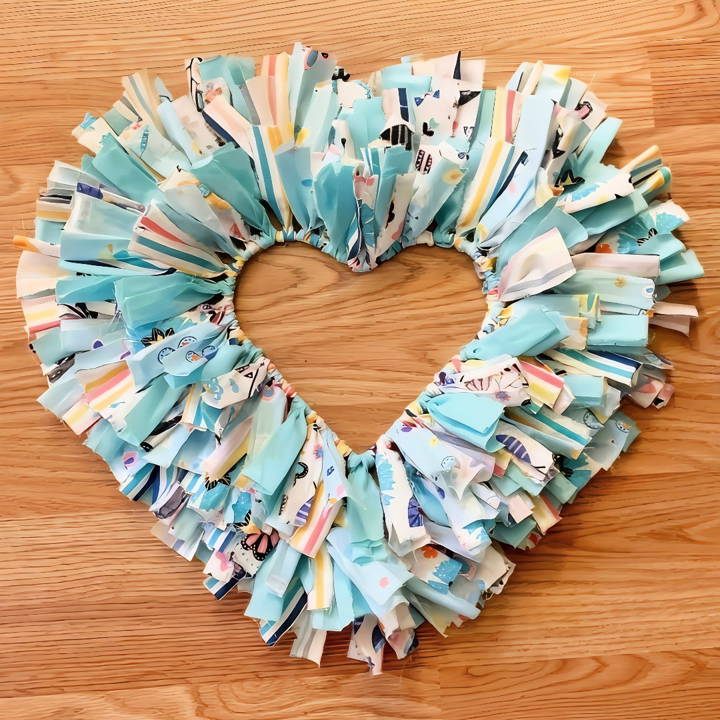
Following clear step-by-step instructions made it straightforward and enjoyable. It's a project anyone can accomplish with ease. You'll need an old wreath frame, fabric scraps, and a bit of time.
This rag wreath tutorial is very helpful for visual instructions. I'm excited to share this with you because it's a rewarding way to make and personalize home decoration.
Why Make a Rag Wreath?
Making a rag wreath is a rewarding project because it's cost-effective, with materials from stores like Dollar Tree and Walmart. It offers immense creativity and personalization for any occasion. Plus, it's a fun, crafty activity to enjoy with children or friends, making a lovely piece for your home and memories.
Materials Needed
- Wreath Form: I used a heart-shaped form from the Dollar Tree, but a round one works just as well.
- Fabric Bundles: Two bundles for a heart shape, and I'd recommend three for a round wreath to ensure you have enough. These are usually sold in coordinated colors, which is a great bonus.
- Scissors (optional, for those who prefer a cleaner edge to their fabric strips).
Fabric Preparation
The charm of a rag wreath lies in its rustic, shabby-chic appearance, which I adore. To achieve this, start by cutting your fabric into strips. I cut mine into 1.5-inch (width) by 7-inch (length) strips. For an added rustic effect, I chose to tear my fabric instead of cutting it, which gave it a beautifully frayed edge. If you prefer a neater look, feel free to use scissors or pinking shears.
Step by Step Instructions
Learn how to make a stunning DIY rag wreath with our step-by-step instructions. From cutting fabric to final touches, we've got you covered!
1. Cutting/Tearing Your Fabric
Measure and mark your fabric before tearing or cutting it into strips. This can be a bit time-consuming, but it's worth the effort for the final look.
2. Preparing Your Strips
Once you have a bunch of fabric strips ready, take one strip and fold it in half lengthwise, and then double it back to form a loop.
3. Attaching the Strips
Starting with the outermost ring of your wreath form, slide the two loose ends of your fabric strip under the wire form, bringing them through the loop you formed. Pull tight. This simple knot will securely attach the fabric to the wreath form. Repeat this step, attaching fabric strips closely together until the entire form is covered. Alternate colors or patterns as you wish to make a visually appealing design.
4. Finishing Touches
After covering the wreath form entirely with fabric strips, step back and assess your work. You may want to adjust some strips or add more to areas that seem sparse. Remember, the beauty of a rag wreath is in its imperfect, casual look, so don't stress about getting every piece exactly right.
Additional Tips
- Fullness: The number of fabric strips you use will determine how full your wreath looks. Don't be afraid to fill it in until you're satisfied with its appearance.
- Hanging: Consider how you plan to display your wreath. If it's going on a door or outside, make sure to protect it from the elements to prevent mold or fading.
- Personalization: Add embellishments like fake flowers, ribbons, or a wooden sign to make your wreath even more unique.
Customization Ideas for Your DIY Rag Wreath
Making a DIY rag wreath is not just about following a set of instructions; it's an opportunity to express your creativity and make something truly unique. Here are some customization ideas to inspire you:
- Choose a Theme: Start by deciding on a theme for your wreath. It could be seasonal, like spring flowers or autumn leaves, or based on a holiday, such as Christmas or Halloween. You can also pick a color scheme that matches your home decor or celebrates your favorite colors.
- Add Personal Touches: Personalize your wreath by incorporating elements that reflect your interests or memories. For example, if you love the beach, add some seashells. If you're a book lover, include small, rolled-up pages from an old book.
- Play with Textures: Mix different fabric textures for a more dynamic look. Combine burlap with satin, lace with denim, or felt with tulle. This will give your wreath depth and make it more visually interesting.
- Incorporate Upcycled Materials: Use materials you already have at home for an eco-friendly touch. Old clothes, bed sheets, or curtains can find new life in your wreath. This not only reduces waste but also adds a story to your creation.
- Vary the Fabric Strips: Instead of cutting all your fabric strips to the same size, vary their lengths and widths. Some can be thin and long, others wide and short. This variation can make a more appealing and less uniform appearance.
- Experiment with Patterns: Arrange your fabric strips in patterns. You could make stripes, chevrons, or a random mosaic. Patterns can add a level of sophistication and intentionality to your design.
- Add Functional Elements: Make your wreath more than just decorative. Attach a chalkboard sign to write messages, or add hooks to hang keys. This way, your wreath serves a practical purpose as well.
- Include Lights: For a wreath that shines, weave in a string of LED lights. This can make your wreath a focal point in the evening and add a warm, welcoming glow.
The beauty of a DIY project lies in making it your own. So, let your imagination run wild and make a wreath that you'll be proud to display!
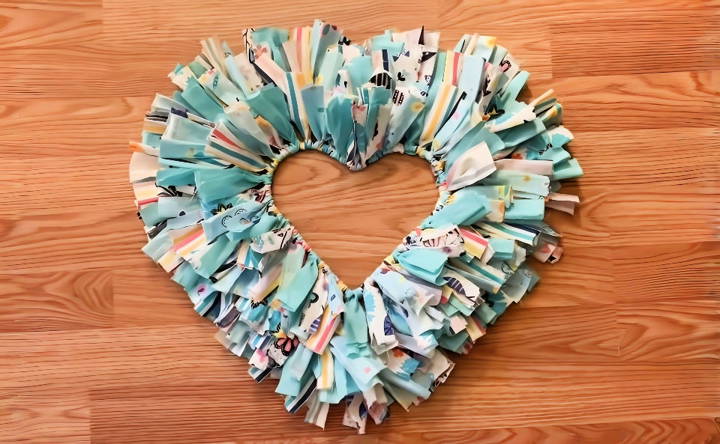
Styling Tips for Your DIY Rag Wreath
When it comes to styling your DIY rag wreath, the possibilities are endless. Here are some tips to help you make a wreath that's not only beautiful but also reflects your personal style:
- Seasonal Adaptability: Make your wreath versatile by designing it with the ability to change decorations according to the season. Use a neutral base of fabric strips, and attach seasonal items that can be easily switched out.
- Color Coordination: Choose colors that complement the area where the wreath will be displayed. If it's for your front door, consider the color of the door and the exterior of your home. For indoor use, think about the room's color scheme and decor style.
- Texture Variety: Incorporate a mix of textures to add depth to your wreath. Combine smooth, silky fabrics with rough, rustic ones like burlap or tweed. This contrast will make your wreath more visually interesting.
- Symmetry and Balance: While asymmetry can be eye-catching, ensure that your wreath has a sense of balance. Distribute colors and textures evenly, or if you prefer an asymmetrical look, keep a focal point to draw the eye.
- Personal Elements: Add items that have personal significance to you. This could be anything from a vintage brooch to a small toy that brings back memories. These elements make your wreath unique and tell a story.
- Layering: Don't be afraid to layer your fabrics and decorations. Overlapping different elements can make a rich, full look that adds to the wreath's charm.
- Keep It Simple: Sometimes, less is more. If you prefer a minimalist style, choose a few key elements and stick to a simple color palette. This can be just as striking as a more elaborate design.
- Safety First: If you're adding lights or other electrical elements, ensure they're safely installed and suitable for outdoor use if necessary. Always follow the manufacturer's instructions.
By following these styling tips, you'll make a rag wreath that's not only a beautiful piece of decor but also a reflection of your personality and style.
Troubleshooting Common Issues
When crafting a DIY rag wreath, you might encounter a few hiccups along the way. Here's how to tackle some common issues with simple, effective solutions:
Fabric Strips Keep Slipping Off
- Solution: Ensure that you're tying the strips tightly enough. If they still slip, try double-knotting them or using a dab of hot glue to secure them in place.
Wreath Looks Uneven
- Solution: Fluff out the fabric strips to fill in gaps, and trim any excessively long pieces. Distribute colors and textures evenly around the wreath for a balanced look.
Fabric Fraying Too Much
- Solution: Choose fabrics that fray less, like felt or fleece. If you're using materials that fray, such as burlap, seal the edges with clear nail polish or fabric glue.
Wreath is Too Flat
- Solution: Add more layers of fabric strips to increase volume. Consider using a mix of fabric types to give your wreath a fuller appearance.
Colors Look Faded
- Solution: If your wreath will be displayed outdoors, opt for fabrics with colorfast dyes that resist fading in sunlight. For indoor wreaths, refresh faded fabrics with fabric paint or markers.
Wreath Frame is Visible
- Solution: Pack your fabric strips closer together. If the frame peeks through, wrap it in ribbon or fabric first before adding your strips.
Decorations Fall Off
- Solution: Secure any added decorations with floral wire or hot glue instead of just tucking them in between fabric strips.
Fix these common issues to make your DIY rag wreath beautiful and durable. Crafting is about learning and improving your skills with each challenge!
FAQs About DIY Rag Wreath
Learn the answers to frequently asked questions about DIY rag wreaths. Discover tips, materials, and steps to make your own beautiful wreath!
Begin by cutting your fabric into strips using scissors. The strips don’t need to be perfectly uniform, but a general size to aim for is about 3 inches wide by 8 inches long. If you prefer a less frayed look, cut the fabric on a bias; otherwise, straight cuts will suffice. You can use a cardboard template to help with consistency.
Once your fabric strips are ready, stack them by your work area. Take one strip, fold it in half, and tie it onto the wire wreath form with a knot. Continue this process, pushing the knotted strips close together to make a full and fluffy appearance. There's no need for glue or other adhesives; just knots will do.
Absolutely! The beauty of a rag wreath is its versatility. You can choose fabric colors and patterns that match any season, holiday, or decor theme. For example, red and white fabrics can be used for a festive holiday wreath, or pastel colors for a spring look. Feel free to get creative and personalize your wreath to your taste.
Rag wreaths are quite durable and easy to store. Simply shake out the wreath to fluff up the fabric if it gets compressed. Avoid storing it in damp places to prevent mold or mildew. If your wreath gets dirty, you can spot clean the fabric or, if the materials allow, gently hand wash and air dry the wreath before storing it away.
The time it takes to make a DIY rag wreath can vary based on the size of the wreath and the number of fabric strips you use. Generally, it can take anywhere from 1 to 3 hours. It's a perfect project to work on while watching TV or relaxing. The process is simple and repetitive, making it easy to pick up where you left off if you need to take breaks.
Conclusion
Making your own DIY rag wreath is a creative and satisfying way to bring a personal touch to your living space. These easy steps will guide you in crafting your own beautiful wreath. Get started today and see how simple it is to make something wonderful!


